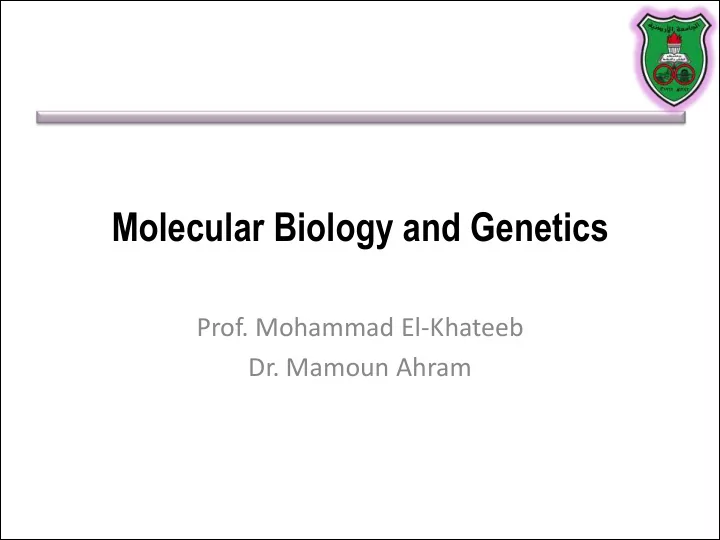

Types of cleavages • Restriction enzymes cut DNA in two different ways: – Blunt – Staggered (off-center) 70
Blunt end • Cut at the same position on both strands giving a blunt ended fragments 71
Sticky or cohesive ends • Cut the two DNA strands at different positions – The DNA fragments have short single-stranded overhangs at each end • Called sticky or cohesive ends 72
5’ vs. 3’ overhangs 73
Palindromic sequence 74
DNA ligase • Covalently joins DNA ends (example, restriction fragments) • Catalyzing the formation of 3’→ 5’ phosphodiester bonds between the 3-hydroxyl end of one strand and the 5-phosphate end of another strand 75
Advantage of restriction endonucleases • Restriction fragment length polymorphism (RFLP) • Cloning 76
DNA polymorphisms • Individual variations in DNA sequence may create or remove restriction-enzyme recognition sites generating different restriction fragments • Remember: we are diploid (alleles can be homozygous or heterozygous) • What is an allele? 77
78
Restriction fragment length polymorphism • The presence of different DNA forms in individuals generates a restriction fragment length polymorphism, or RFLP 79
Detection of RFLP • Gel electrophoresis • Southern blotting 80
Example 81
RFLP in the clinic • RFLP can be used as diagnostic tools • For example, if a mutation that results in the development of a disease also causes the generation of distinctive RFLP fragments, then we can tell – if the person is diseased as a result of this mutation – from which parent this allele is inherited 82
Disease detection by RFLP 83
Think!! What would you see in a gel? 84
85
Example 1: Disease detection by RFLP (sickle cell anemia) Normal/ Normal Diseases carrier Father Mother Son1 Son2 Son3 86
Example 2: Disease detection by ASO (Cystic fibrosis) ASO: Allele-specific oligonucleotide 87
Example 3: Paternity testing 88
Example 4: Forensics 89
Molecular cloning Recombinant DNA technology • Cloning means that you make several copies of one thing • How? • insert a DNA fragment of interest into a DNA carrier (called a vector) • The result is what is known as a recombinant molecule 90
Using plasmids as vectors • Bacterial plasmids are considered excellent vectors • Most plasmid vectors contain at least three essential parts required for DNA cloning: – Can replicate – Can be selected for/against by an internal drug-resistance gene (selectable marker) – Can inset a foreign DNA fragment 91
Making of recombinant DNA • Both DNA fragments (the DNA to be cloned and a vector) are cut by the same restriction endonuclease that makes sticky-ended DNA fragments • When mixed, they will bind to each other 92
93
Cell clones Cloned DNA 94
A benefit of cloning • Production of therapeutic proteins – Insulin and growth hormone – Vaccines 95
DNA replication a general mechanism
Resources • This lecture • Campbell and Farrell's Biochemistry, Chapter 10 97
What is a genome? • The entire DNA content of the cell is known as genome • In general, the more complex the organism, the larger its genome is 98
Chromosomes • DNA is organized into chromosomes • Bacterial genome: usually one and circular chromosome • Eukaryotic genome: multiple, linear chromosomes complexed with proteins known as histones 99
Transfer of molecular information 100
Recommend
More recommend